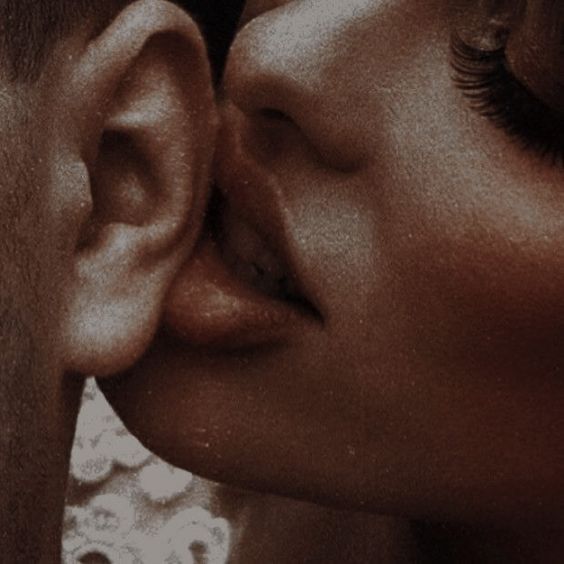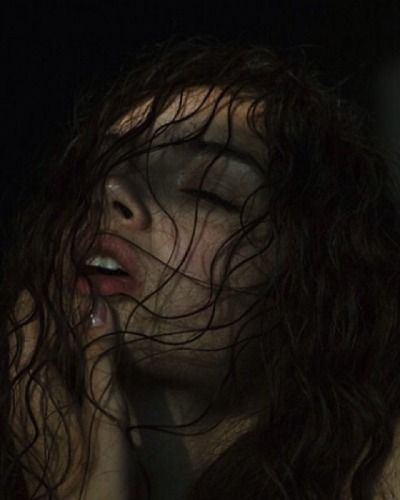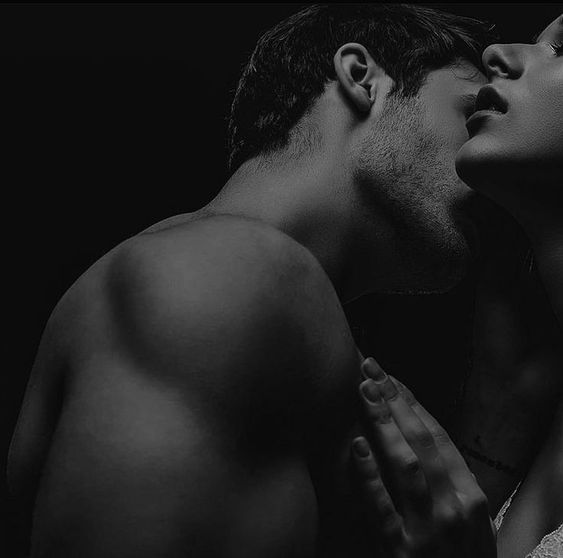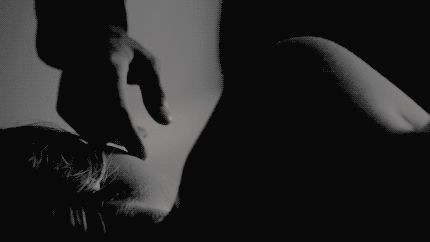
Picture this: A candle-lit room, where shadows flicker against the silk-draped walls. The air is thick with tension and desire as two lovers move in a slow dance of escalating intimacy. In the heart of this fervent exchange, a soft moan unfurls, rippling through the quietude.
It’s a sound that speaks volumes—a symphony of pleasure, surrender, and aching need. It’s a sound that, as a writer, you seek to capture in all its profound, visceral authenticity.
Crafting these moments in erotic and romance literature is a delicate art—conveying the raw emotion and palpable sensation that birthed that sound.
This is the challenge we’re focusing on in this blog post: how to write moans the right way.
Let’s delve into the art of writing moans, and explore how we can make them whisper, hum, and roar off your pages.
Understanding sensual expressions
Moans, sighs, gasps, and other expressions are not just mere sounds or physical reactions; they are audible embodiments of the character’s internal emotional landscape.
They represent the unspoken language of desire, becoming a vivid testament to the characters’ sensations, emotions, and intimacy.
In erotic scenes, these vocal expressions serve many functions:
- Moans accentuate the moment’s intensity, escalating the narrative tension and painting a vivid picture of the characters’ shared experiences.
- They act as vital communication tools between the characters, conveying consent, enthusiasm, or discomfort.
- Moans provide valuable insights into a character’s persona. Are they uninhibited in their vocalizations, reflecting a free-spirited, passionate nature? Or are they more reserved, their moans barely audible whispers, mirroring a more cautious or self-conscious character?
- A well-written moan can stimulate the reader’s senses, making them feel like they’re in the room with the characters. This heightens the scene’s emotional impact and enhances the overall reading experience, making the narrative more immersive and memorable.
Moans should feel natural, authentic, and in harmony with the character’s personalities and the situation at hand.
The basics of writing moans

Moans, like any other component of your narrative, are grounded in the basics of good writing.
The key elements to consider while writing moans are:
- Word choice – Each word you choose should accurately reflect the kind of moan you’re portraying and align with the scene’s mood.
- Context – Moans can be expressions of various emotions, not just erotic pleasure. They can reflect pain, surprise, relief, or even frustration. Hence, ensure that the moan you’re writing aligns with the scenario you’ve crafted. The cause of the moan—the action, emotion, or sensation prompting it—should be clear to the reader.
- Variety – Overused phrases or descriptions can quickly become monotonous and reduce the impact of your scene
- Emotional resonance – The portrayal of moans should go beyond the physical and delve into the emotional realm. Capturing the emotional significance of the moan can make your scenes feel more realistic and impactful.
The use of descriptive language for moan writing

Here’s a list of words, phrases, symbols, and metaphors that you can use to create believable and heated moans.
1. Describing volume and intensity of the moan:
- Soft: A soft moan escaped her lips, barely audible, yet electrifying.
- Loud: His loud moan filled the room, a raw testament to his pleasure.
- Whispered: She whispered a moan into his ear, setting his nerves on fire.
- Echoing: His echoing moan hung in the air, adding a carnal melody to the night.
- Hushed: A hushed moan escaped her lips, as if carrying a secret only meant for him.
- Piercing: His piercing moan cut through the silence, a testament to his overwhelming pleasure.
- Resonant: Her resonant moan vibrated in the air, stoking the flames of his desire.
- Muffled: His muffled moan against her neck sent a shiver of anticipation down her spine.
- Deafening: His deafening moan echoed around the room, signaling his intense pleasure.
- Subdued: Her subdued moan was a hushed whisper, a secret shared only between them.
- Thunderous: His thunderous moan was a wild declaration of his passion.
- Stifled: She stifled a moan, the sound barely escaping her lips but filled with yearning.
2. Describing the texture and quality of the moan:
- Throaty: A throaty moan tumbled from her, radiating unabashed desire.
- Husky: His husky moan sent a shiver down her spine.
- Ragged: She let out a ragged moan, teetering on the edge of surrender.
- Breathless: His breathless moan mingled with the sultry evening air.
- Mewling: A mewling moan slipped from her lips, sweet and yearning.
- Guttural: His guttural moan was a primal declaration of his desire.
- Tremulous: Her tremulous moan echoed her mix of fear and anticipation.
- Sultry: His sultry moan in her ear was a tantalizing promise of what was to come.
- Crooning: She let out a crooning moan, a tantalizing melody that fueled his desire.
- Shuddering: A shuddering moan shook her as she was consumed by pleasure.
- Grating: His grating moan portrayed a mix of pleasure and pain, adding an edge to the encounter.
- Lilting: Her lilting moan danced through the air, as sweet and intoxicating as the finest wine.
3. Describing emotional undertone:
- Pleasured: A pleasured moan slipped from her lips, setting his heart ablaze.
- Painful: His moan held a tinge of pain, a reminder of the bittersweet pleasure.
- Relieved: She let out a relieved moan as the tension finally broke.
- Surprised: A surprised moan erupted from him as she explored uncharted territory.
- Desperate: She let out a desperate moan, a plea for him not to stop.
- Satisfied: A satisfied moan resonated in the room as she reveled in the lingering ecstasy.
- Longing: His moan of longing was a call she found herself unable to resist.
- Anguished: Her anguished moan tugged at his heartstrings, urging him to ease her discomfort.
- Ecstatic: An ecstatic moan slipped past her lips as waves of pleasure washed over her.
- Agonized: His agonized moan underscored the bittersweet threshold of pain and pleasure.
- Eager: She let out an eager moan, expressing her readiness to explore uncharted territories of intimacy.
- Wistful: His wistful moan was a melancholic song of desire and yearning.
4. Descriptive metaphors and similes:
- “Her moan, sweet as sin, filled the hushed room.”
- “His moan rippled through the quietude, like a pebble disturbing the serene surface of a pond.”
- “She let out a moan, soft and haunting like a love song from a forgotten era.”
- “His moan was a raw, primal sound, untamed as the wilderness.”
5. Moan synonyms
It’s also useful to have a range of synonyms for ‘moan’ at your disposal to avoid repetition:
- Sigh
- Groan
- Gasps
- Whimper
- Murmur
- Cry
- Whine
- Wail
- Purr
- Yowl
- Keen
- Sob
- Howl
- Yelp
- Howl
- Cry
- Whine
- Murmur
- Purr
- Pant
- Gasps
- Grunt
- Growl
- Breath
- Utterance
- Exhale
- Hiss
- Croon
- Hum
- Murmuration
- Plead
- Gasp
- Bellow
- Roar
- Holler
- Squeal
- Screech
- Shriek
- Wince
- Mutter
- Grumble
- Snivel
- Lament
- Complain
- Squeak
- Bleat
- Quaver
- Tremble
- Choke
- Rasp
6. Adjectives
Here are 50 adjectives that can be used to describe moans in various contexts:
- Soft
- Loud
- Whispered
- Echoing
- Throaty
- Husky
- Ragged
- Breathless
- Pleasured
- Painful
- Relieved
- Surprised
- Hushed
- Piercing
- Resonant
- Muffled
- Mewling
- Guttural
- Tremulous
- Sultry
- Desperate
- Satisfied
- Longing
- Anguished
- Deafening
- Subdued
- Thunderous
- Stifled
- Crooning
- Shuddering
- Grating
- Lilting
- Ecstatic
- Agonized
- Eager
- Wistful
- Seductive
- Quivering
- Sensuous
- Melodic
- Harmonious
- Raspy
- Yearning
- Deep
- High-pitched
- Wanton
- Carnal
- Heated
- Passionate
- Raw
7. Physical manifestations of the moan
Here are 50 terms and phrases that can be used to describe the physical manifestations and reactions associated with moans in a scene:
- Arching back
- Trembling hands
- Clenching fists
- Quivering lips
- Fluttering eyelashes
- Wide-eyed
- Heaving chest
- Sweaty brow
- Shuddering breaths
- Tense muscles
- Rapid heartbeat
- Blushing cheeks
- Goosebumps
- Writhing body
- Tangled hair
- Biting lower lip
- Closed eyes
- Strained neck
- Gritting teeth
- Gripping sheets
- Curling toes
- Pressed against each other
- Stroking hair
- Whispering in ears
- Tracing fingers
- Running hands over body
- Exposed neck
- Soft sighs
- Throbbing veins
- Damp skin
- Dizzy head
- Taut nerves
- Buckling knees
- Swallowing hard
- Jolting shock
- Intertwined legs
- Jerking hip
- Fumbling hands
- Warm breath on skin
- Teasing touch
- Holding breath
- Muffled gasp
- Sinking into pillows
- Pressing lips together
- Beads of sweat
- Tossing head back
- Squirming under touch
- Rapid breathing
- Wandering hands
- Restless movement
As with any descriptive language, the key is to incorporate these terms and phrases organically into your narrative.
They should enhance the scene and add depth to the characters’ emotions and experiences, without becoming distracting or overwhelming.
8. Combine descriptors with sounds
This combination allows the reader to not only “hear” the sound but also to “feel” its texture and emotional resonance.
For example:
- Low, rough grunt: Here, “low” and “rough” work as adjectives giving volume, texture, and quality to the “grunt.” This phrase suggests a sound that is primal and indicates intense pleasure or effort.
- Sweet little cry: The words “sweet” and “little” bring a sense of softness, innocence, and perhaps even reluctance to the “cry.” It conveys vulnerability, hinting at a character who might be experiencing a new or overwhelming sensation.
- Desperate, filthy noise: “Desperate” and “filthy” imply a kind of raw, uninhibited pleasure that’s intense and even a bit taboo. The “noise” here doesn’t specify the exact sound, adding a layer of ambiguity and intrigue.
Other good combinations of descriptors and sounds are:
- Fierce, guttural roar: This suggests an intense, animalistic sound that comes from deep within, potentially signaling a climax or a moment of intense emotion.
- Delicate, whispered sigh: This implies a soft, intimate sound, almost like a secret shared between lovers. It could indicate a moment of gentle tenderness or quiet satisfaction.
- Ragged, panting gasps: This combination conveys a sense of breathlessness, possibly from intense pleasure or exertion. The sound is uneven, suggesting a loss of control.
- Sultry, drawn-out moan: This is a slow, sensual sound full of desire. It might be used in a moment of anticipation or when a character is savoring a sensation.
- Sharp, keening wail: This phrase describes a high, piercing sound that may indicate intense pleasure, pain, or a mix of both. It suggests a sense of abandon and might be used in more intense scenes.
- Pulsing, rhythmic groan: This shows a regular, repeated sound that might sync with the characters’ movements or heartbeat. It could indicate a steady buildup of pleasure.
- Deep, resonant growl: This is an intense, possibly a bit animalistic moan.
- Sharp, breathy gasp: This is a sound of surprise, perhaps as a response to an unexpected or particularly intense sensation. It conveys a sense of urgency and might suggest a sense of losing control.
- Soft, lingering sigh: This phrase implies a gentle and prolonged sound that conveys satisfaction, contentment, or longing. It can be used after a moment of intimate connection, or when a character is savoring a particular sensation.
- Broken, whimpered moan: This describes an uneven moan, punctuated by breaths, indicating a high level of pleasure or even a little pain. The whimper suggests vulnerability and can be used in more intense or emotional scenes.
- Muffled, throaty groan: This is a suppressed or controlled sound that’s deep, raw, and intimate. It is used in a situation where a character is trying to stay quiet, or when the pleasure is so intense that it becomes hard to make a sound.
- Heated, desperate panting: This describes rapid, intense breaths, revealing a character on the brink of losing control, teetering on the edge of their climax.
- Sultry, provocative purr: This indicates a character deliberately using their voice to tease or entice their partner, brimming with self-assured sensuality.
- Wild, ravenous growl: This suggests a character driven by intense, almost animalistic lust. It’s a sound that implies eager anticipation or an aggressive response to pleasure.
Avoiding the common mistakes

Writing moans as direct sounds: Ahhh, Ughhhhh, Nghhhhhhhh
Please, don’t do this.
While it can work in some instances, it often leads to ambiguity as different readers might interpret the same sound differently.
Moreover, it can come across as less professional or mature in a written format.
Here’s why:
1. Interpretation varies: What does “Nghhhhhhhh” really sound like? Every reader will have their own interpretation, which might not align with what you, as the writer, intended. This can lead to confusion or a disconnect between the reader and the narrative.
2. Can disrupt flow: An unexpected “Ughhhhh” or “Inghhhhhhhhhhh” in the middle of a paragraph can disrupt the flow of the narrative. This might momentarily take the reader out of the story.
3. Lack of description: Writing moans as direct sounds doesn’t offer the same level of descriptive detail as using adjectives, metaphors, and context. This could lead to a loss in the richness and depth of your scene.
4. Can come across as comical or immature: Depending on the context, using onomatopoeic sounds for moans can risk coming across as comical, immature, or less sophisticated, especially if overused.
Instead, consider conveying moans through a combination of descriptive language, character reactions, and context.
This can offer a more nuanced and immersive way of expressing these sensual sounds, while maintaining the flow and sophistication of your narrative.
Overuse
One of the most common mistakes is overusing moans or their descriptions in a scene.
While moans are powerful tools for conveying emotion and sensation, too many can dilute their impact and come off as repetitive or unrealistic.
Balance is key.
Mix up your use of descriptive language and intersperse the moans with dialogue, actions, and other sensory descriptions.
❌ She moaned as he traced a finger down her arm. Then she moaned again when he leaned in to whisper in her ear.
✅ A soft sigh escaped her as he traced a finger down her arm. She drew in a sharp breath when he leaned in to whisper in her ear, a sound almost like a whimper.
Lack of variety
Using the same words or phrases repeatedly makes your scenes feel monotonous. Aim for a mix of synonyms, adjectives, and descriptions to keep the narrative engaging.
Also, remember to vary the emotional undertones, volumes, and textures of the moans to reflect the changes in the scene and characters’ emotions.
That’s what all the above-mentioned vocabulary is for. 😉
Forgetting the physical reactions
Moans often come hand in hand with physical reactions.
By ignoring these, you miss out on making your scenes more realistic and engaging.
Remember to describe the associated physical manifestations and reactions, like the characters’ facial expressions, body language, or the sensations they’re experiencing.
❌ She moaned when he kissed her. Then she moaned again as he trailed kisses down her neck. Another moan filled the room as his hands moved to her waist.
✅ A soft moan escaped her when his lips met hers, her hands instinctively reaching up to tangle in his hair. The sound morphed into a gasp as he trailed kisses down her neck, her pulse racing beneath his lips. As his hands found her waist, her back arched slightly towards him, her fingers digging into his shoulders.
Being too direct or clinical
This takes away from the sensuality of the scene.
Aim for a balance between clarity and evocativeness, using metaphorical language and focusing on the characters’ subjective experiences.
❌ He heard her moan, indicating her consent.
✅ Her soft moan caressed his ears, a sultry sonnet that granted him her silent approval.
How to write moans FAQs
How can I make sure my moans sound realistic and not overdone?
The key is to keep it balanced and varied. Using the same words or descriptions repeatedly can sound monotonous. It’s also important to avoid excessive use of moans in a single scene because this can dilute their impact.
Can I use direct sound representations of moans in my writing, like “Ahhhhh” or “Mmmmm”?
While this can work in certain instances, it’s better to convey moans through a combination of descriptive language, character reactions, and context. This can provide a more nuanced and immersive expression of these sensual sounds.
How do I avoid making my moans sound comical or immature?
Opt for descriptive language and varied expressions rather than relying solely on onomatopoeia. Consider the emotional undertones, volume, and texture of the moan.
How do I use moans to convey the emotional state of my characters?
Think about the emotional undertones of the moan. The way a character moans can say a lot about their emotional state. Is the moan hesitant, indicating uncertainty or vulnerability? Is it loud and uninhibited, reflecting a sense of liberation or intense pleasure?